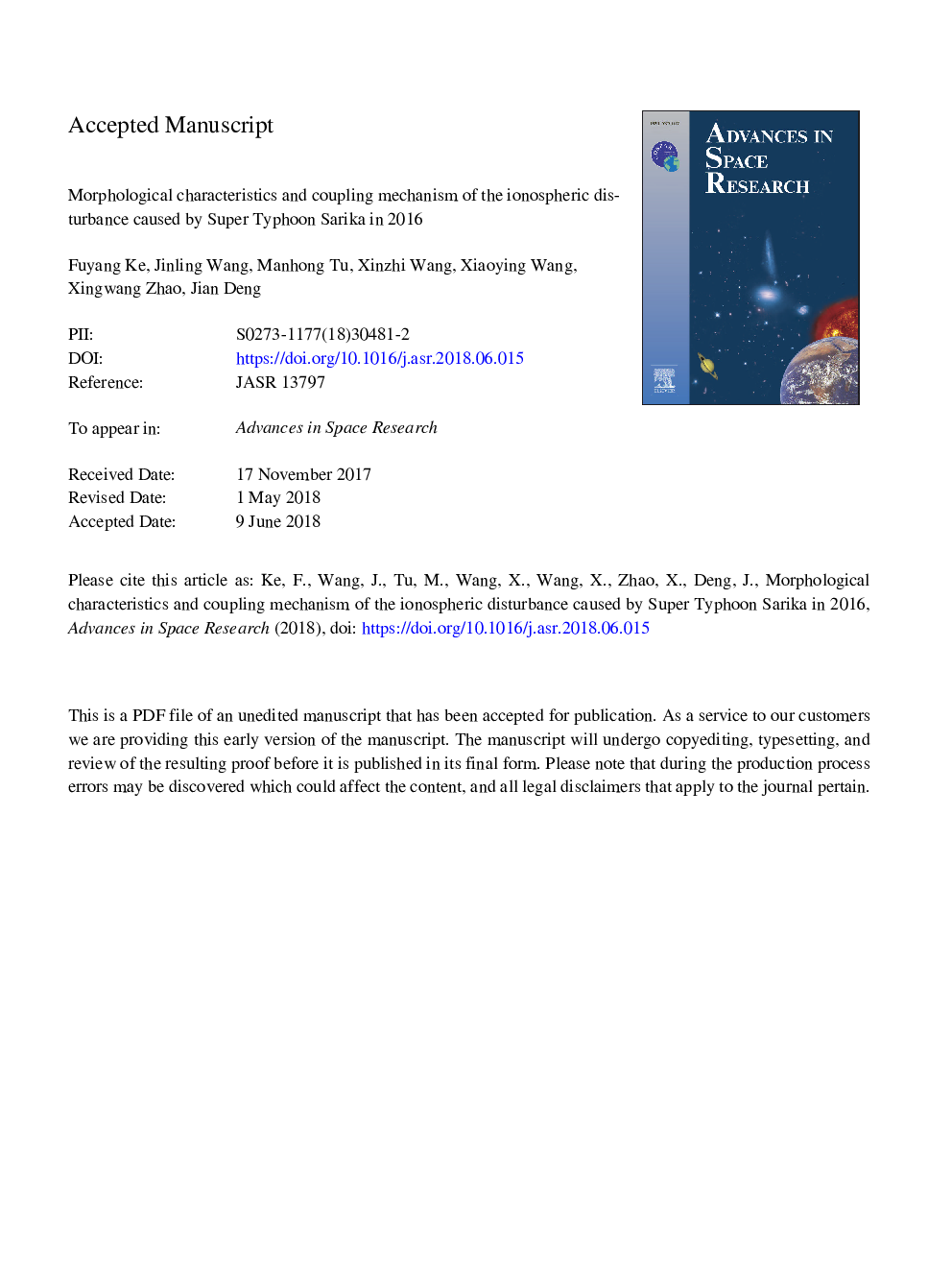| Article ID | Journal | Published Year | Pages | File Type |
|---|---|---|---|---|
| 8131662 | Advances in Space Research | 2018 | 17 Pages |
Abstract
The temporal and spatial morphological characteristics of the ionospheric disturbance caused by Super Typhoon Sarika (ST-Sarika) in 2016 are investigated using tomography sounding data observed using a Digisonde-4D portable sounder installed on the FuKe Station (FKS) of the Meridian Space Weather Monitoring Project of China. The results show that significant ionospheric disturbances were found and correlated to ST-Sarika. The electrons in E and F1 layers decreased and even disappeared during the period from 00:00 to 03:00 UTC in the forenoon of Oct 17, 2016, the 1st day before ST-Sarika landed on Hainan Province. However, the electron density in E and F1 layers increased in the afternoon of ST-Sarika landfall day and the next day. As the ascending and descending airflows of ST-Sarika alternately passed above the FKS, the anomalies of profile electron density in the F2 layer periodically appeared at 4-h intervals. When the strongest ascending airflow of ST-Sarika eyewall was above FKS UT 12:00 (Sunset) of Oct 18, the extent of electron density profile anomaly in the F2 layer was the largest with the maximum of 0.8â¯ââ¯106â¯e/cm3, and the electrons in the F2 layer above 350-km altitude disappeared. Additionally, the ionospheric vertical drift above the FKS was mainly downward, and its mean daily velocity reached the maximum of 6.8â¯m/s on Oct 18, but the ionospheric vertical drift velocity suddenly increased to 70â¯m/s and lasted for a few minutes before typhoon center arrived above the FKS. On the basis of these temporal and spatial morphological characteristics of the ionospheric disturbances, the coupling mechanism was explained by the combined action of turbulent layer movement, photochemical reaction, neutral wind, electric field, and gravity waves from the interaction between ST-Sarika airflow and the varied topography.
Related Topics
Physical Sciences and Engineering
Earth and Planetary Sciences
Space and Planetary Science
Authors
Fuyang Ke, Jinling Wang, Manhong Tu, Xinzhi Wang, Xiaoying Wang, Xingwang Zhao, Jian Deng,
